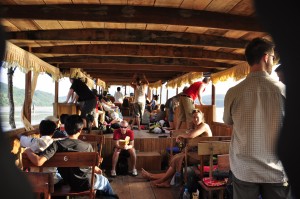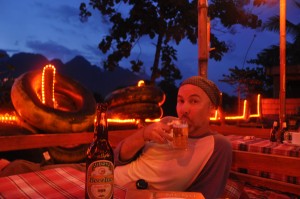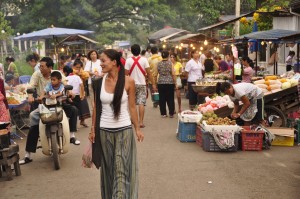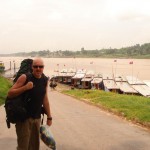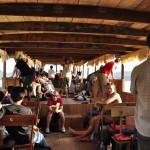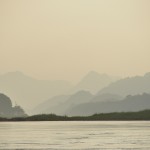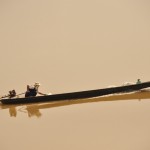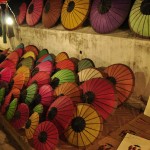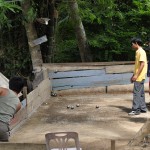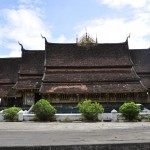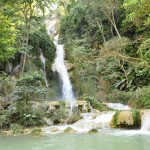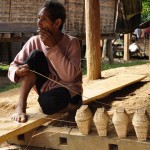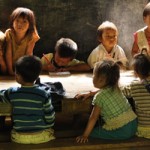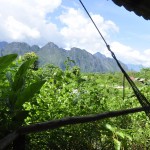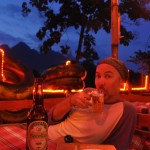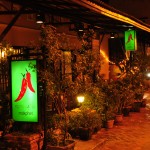As possibly one the bigger undertakings in our lives to date, this part of our adventure is impossible to throw up in a single blog. Apart from the amazing sights, people, cultures, mountains and the auspicious peak crossing (and engagement proposal) itself – there is also the simple fact that there was not a lot to do when the sun goes down… other than stay warm and make a few notes. While one could easily write a book on it (as many people seem to do here), I will try to simply capture the more salient experiences for posterity, but bear with me as I serialize this a little bit.

Annapurna Circuit Basics
From Kathmandu, we braved a 7 hr bus ride through the scenic valleys, rice paddies & villages of the Prithi highway to Pokhara, a peaceful lakeside city in central Nepal. Whereas Kathmandu has a big city, chaos complex, Pokhara retains much of it’s hippie vibe and the tourist part of town (Lakeside) is happily insulated from the world and home to both long term travelers relaxing and soaking up a low cost, alternate lifestyle and a myriad of trekkers (largely Euro’s) preparing to savour the surrounding mountains that completely dominate the horizon.
As one of the longest (and most popular) treks in the world, the Annapurna Circuit is a 15-21 day hike that follows a course along two rivers – up, over and around the stunning mountain range known as the Annapurna’s – a region containing 3 of the 8 tallest mountains in the world; the highest pass; highest lake and the deepest ravine – all following trails that used to represent salt trading routes linking the villages and tribes between Nepal and Tibet for thousands of years. What makes the circuit most amazing though, is its accessibility and the ease with which it allows you to navigate and engage with this part of the world, as you stay & eat at local tea-houses in ancient villages scattered, every few hours along the valleys and mountains along the way.
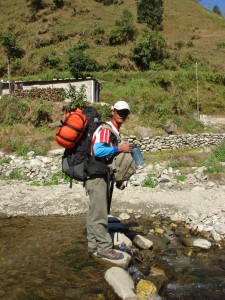
Our porter - Karna
This was our goal anyway and while Megumi haunted our hotels’ wi-fi trying to finish her project, I stalked internet cafe’s, updated our site and spent time researching and talking to trekking companies under the taunting shadows of the Annapurna range. As many of my friends will atest I am a long way off any form of peak fitness, so you can imagine this undertaking came not without equal doses of both excitement and trepidation. After chatting to a few companies, I found some guys I connected well with and proceeded to hire an english speaking, porter to carry our main backpack (Megumi had injured her shoulder doing back somersaults from a high wire in Laos and I was not exactly fit, so it seemed liked the smart thing to do given our reservations). Not keen to be stuck with someone we didn’t like for 15 days though, we took this hiring process pretty cautiously, interviewing a few and actually ended up waiting an extra day to ensure we got a porter (Karna) who we felt especially comfortable with. With that sorted out, officially registered, some last minute hiring of down sleeping bags and jackets (when told it was likely to hit -15 degrees up top at night) and a quick stockpiling of drugs, energy bars & chocolates, we were ready to go.
Day 1 – Pokhara to BesiSahar (5 hr Bus) / trek to Ngadi (13km / 4 hrs)
Our porter Karna (running late), picked us up from our hotel at 6.30am in order to catch a local bus to our trek start point, some 100km (5 hours) distant. Catching a local bus in Nepal is a fascinating experience. The TATA buses tend to be brightly, almost psychedelically decked out and operated by a tight team of 2-3 individuals. Firstly, a driver who is completely focused on the somewhat extensive demands of driving along unsealed, one-lane cliff-faces at high speed; dodging oncoming traffic and sounding his ‘ring tone-esque’ horn ahead of every curve. He is closely partnered by a chief facilitator who hangs out the bus side door banging the side of the bus & ringing another horn in a code that seems to provide the driver direction on possible stops, fares, unsighted bends, road edges and reversing dangers; while at the same time managing to tout for additional fares to anyone they pass. All this is accompanied of course by blaring high pitched, bollywood female vocalists and a 4/4 drum beat, pumped through a nervously, thin speaker that amazingly seems to synch perfectly with every challenge the road throws up and the rolling rhythmic gate of passenger heads. The end experience – a constantly interrupted journey of jolts, yells, bangs, beats and melodies that works seamlessly together, as the bus team relentlessly compliment the full seated trekker passengers, with any passing fare from villagers, sacks or chickens that they can conjur.

Rice Terraces
After that extended education safely in the bag, we arrived at BesiSahar and decided to forego the jeep journey up the newly laid road and begin walking, at the very least to break in a few muscles with an easy day. We followed the rough, relatively flat, jeep road for a few hours along the winding course of the Marsyandi river, through hills brimming with rice terraces on the verge of harvest and local swarms of Gurung kids attempting to apprise us of our pens. Upon coming to the small village of BhuleBhule, the road noticeably stopped and a bridge leapt over the raging river below marking the start of the new travel frontier ahead. A transition easily accentuated by the donkey trains backing up – all being loaded up with food, alcohol and other essential supplies for the higher markets, many days walk above.
For the first time the dawning realization hit us that from here on in, there were no short-cuts or easy ways out. Commitment is a funny thing, for the next 12 days we would be on our own, the only way out from here was with our own 2 feet, or on the back of a donkey (excepting the expensive helicopter / plane evac.) Any which way it would take several days now to return to safety. Its amazing how few times in life you are really required to commit to that much time and effort without some sort of net.
Beyond the road we plunged, onward to the small settlement of Ngadi, a series of guesthouses clustered together into a tiny community, where we proceeded to grab a room in one overlooking the river. Arriving mid afternoon, we then watched trains of porters scurry desperately past, trying to catch their respective trekker groups, so that they can start setting up camp for the night. A group of 10 or so older trekkers in a group (most likely French) charge past. In the fading light of dusk they appear as though some forms of human arachnid – shiny, aluminium ski poles protrude unnervingly from hunched bodies, as though bionic grafted frontal limbs & accompanied by the scurrying, metallic CLIK CLAK sound of the poles searching randomly for grip in the rocks in the nature, an entirely alien and unsettling sight. We did actually bring a set of trekking poles ourselves, kindly donated by our porter and I swore to avoid them if at all possible.
Our Guesthouse, despite initial appearances is freezing cold and spartan, perhaps a too real introduction to the days ahead. Huddled into our dining room, for trekker company we have 2 aloof Frenchmen; a Mexican & an American girl, immersed in their knitting and a Canadian banker, Peter – plus an array of locals, guides and porters all waiting for us to finish dinner, so that they can themselves eat. Peter turns out to be our only real conversation, currently working his way from Mongolia, through Tibet & Nepal. We stay up late swapping world views, while everyone else retreats to the warmth of sleeping bags.
Day 2 – Ngadi to Chamche (8 hrs trekking, 16 km, 480m rise)
After an early start around 7am and a relatively even trail, we start hitting some more serious hills mid morning, as the river drops to the bottom of a deep ravine and we start to chart the path higher up the slope. Likely, this is just a small taste of things to come, but the going is tough, as I re-aquaint myself with many muscles, long forgotten and reluctantly employed. Megumi seems to bound up the steep inclines, but I am beginning to have considerable self-doubts about my own fitness and preparation. As we follow the river, the hills give way to a huge gorge and the rice paddies either side appear to impossibly cascade down the sides of the cliff-face & small isolated, villages dot the highest corners, seemingly completely inaccessible.
After a few hours we hear explosions echoing down the valley – blastings for a new road that seems destined to bring ‘civilization’ to this corner of the world. Thoughts flood my mind of the change taking place and the endless arguments for and against. Further up we pass a group of boys as young as 10, chipping impossibly away at the rockface, boring holes into cliffs for dynamiting and throwing loose rocks down the mountain side. I do wonder the death toll that this road racks up for these ‘workers’. With the task in front of them it will take years to complete, but they will get there – its is likely the only guaranteed employment around. For much of the afternoon, we follow the makings of the ‘new road’ relentlessly uphill, picking a trail through landsides and ‘blast sites’ till we reach the small village of Chamche. Blowing hard, I am sore all over and completely exhausted!
We stay in a Tibetan Guesthouse in the centre of town, a pleasant lodge with nice (warmer) rooms and get our first chance to partake of the local liquer “chyang”, a sake like liquor made from rice. Over dinner we watch 4 generations of Tibetan women manage the lodge. The great grandmother parades around the living area chanting mantra’s, twirling beads and cleansing rooms with sage. One of the grand-daughters takes a shine to Megumi, who manufactures a paper crane from scrap to become an instant hit and essential playmate til bedtime.
Day 3 – Chamche to Danaqyu (8 hrs trekking, 15 Km, 815m rise)
Another hard days trekking, the body endlessly protesting, but I do seem to find it a lot easier today than Megumi. Yesterday was lots 0f steep climbs, today is steady and I find that I can do ‘endurance’, its the shifting my weight vertically uphill that seems to be the problem! In the morning there is a steep climb and then more picking our way through road construction. Marijuana grows wild on the sides of the road here and the curious smell of dust and sensimilla adds a lingering strangeness to proceedings..
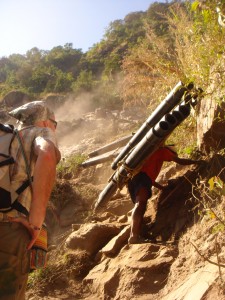
Pipe Carriers
As the rice paddies, grasses slowly, give way to pine forests, we pass more and more donkey caravans, colourfully decorated and winding their way ever upwards with their precious cargoes; impressive in their ability to pick their way through the rocky crevasses. More amazingly we pass several locals barefoot and carrying a dozen, several metre length pipes on their backs up the desperately steep paths. A reminder of how isolated and remote the areas we are heading into really are, despite the seeming endless presence of other trekkers.
At the top of a hill, we pass a couple – the women is visibly upset, crying and seemingly lost in doubts. I know how they feel, though we seem to have very little room for hesitation. Karna is a godsend this way – quiet, friendly and assured, he maintains a steady, unerring pace and when we find it tough and start to falter he moves easily to the front, so that we can just match his assured and practiced footsteps. Already, I am not sure how we would do this without him. While we are carrying a day pack each, he is carrying a full backpack / sleeping bags and his own day pack on a frame half my size, yet never seems tired. Friendly with the locals, he is also able to easily pass on lots of insights and quickly get us settled into tea-house’s, often procuring local delicacies for us from the hidden kitchens – we have bonded pretty quickly.
At Danaqyu, we arrive quite late as the sun disappears behind the mountains and the temperature drops dramatically. We find a guesthouse (The Potala), run by another Tibetan lady that is otherwise empty, so as to guarantee us a hot shower. (There is usually only limited solar heating for a couple of these we have learned) While rooms are generally cheap (200 RP / night or US$3), food is where the tea-houses make their money (you have to eat where you stay) and meals are progressively getting more expensive every few hours now. A coke is up to 150R now, from 35 R 3 days ago. When everything comes up via donkey you have to expect that I guess.
Day 4 – Danaqyu to Chame (5 Hours, 12 km, 510m)
Supposedly a very tough climb to start the day, but it was surprisingly ok. The body still protests and seems to continually discover new untested muscles, but we seem to be getting fitter or at least used to it now. The dramatic, snow capped mountains of the Annapurna range start to pepper the horizons, as we ease up the valley and onto a plateau covered with crops and horses. Villages are slowly changing from the wood dwellings and farms of the Gurung people, into the stone and spartan lifestyles of the Tibetans.
It is a small hike today and we arrive in the thriving township of Chame about lunchtime with ample time to check into a nice, sunny, guest-house by the river and do some much needed washing, while the sun still shines. Chame comes across like one of the last real outposts and the village is an key administration centre. The town is a significant size and its paved streets expound with dozens of enterprising shops showcasing innumerable treasures invaluable to the trekker unprepared or desperate for comforts. We happily take in the sights and pride ourselves in our lack of temptation; Megumi manages to track down the towns, tiny little Hot spring.
Later, we meet Peter again and spend the evening around our guesthouse fire exchanging stories and news, along with a young German couple on their honeymoon and a troupe of 50+ yr old Belgians who we have been leapfrogging for the last 2 days. An easy day and fresh comforts has everyone in a good mood and positive about the paths (and pass) looming ahead.
Continue reading Part 2
Continue reading Part 3
-
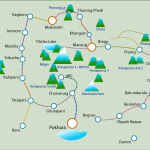
-
Annapurna Circuit Basics
-
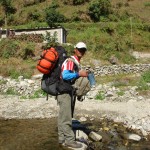
-
Our porter – Karna
-
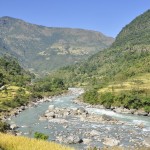
-
Marsyandi River
-
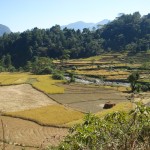
-
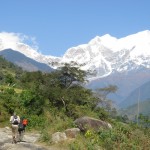
-
In the zone
-
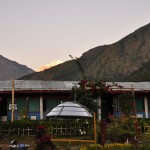
-
Tea House Day 1
-
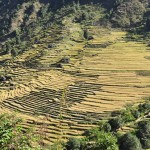
-
Rice Terraces
-
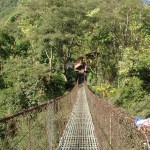
-
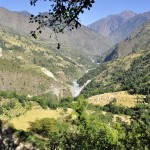
-
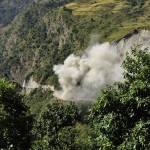
-
Road Blasting
-
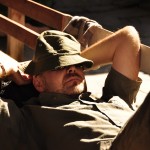
-
Buggered
-
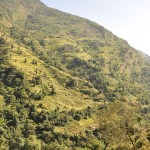
-
Clifftop Village
-
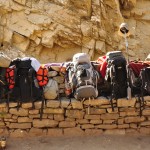
-
Bag Station
-
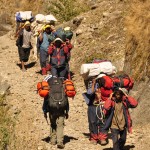
-
Porter Traffic
-
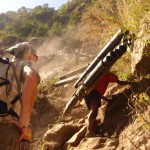
-
Pipe Carriers
-
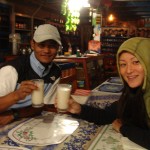
-
Local Brew
-

-

-
Trail style?
-
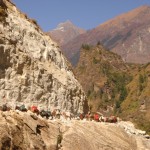
-
Donkey Trains
-
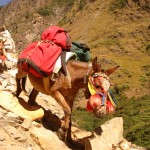
-
Donkey regalia
-
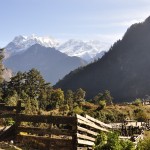
-
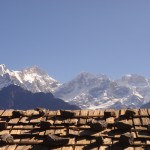
-
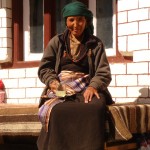
-
Tibetan woman
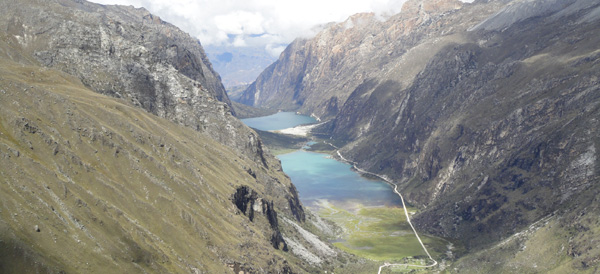

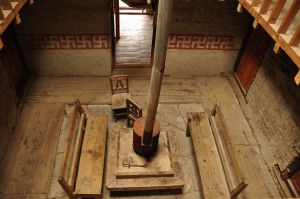
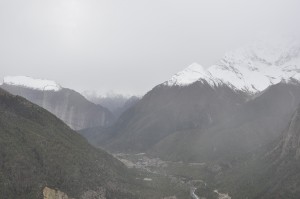

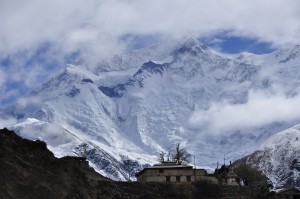

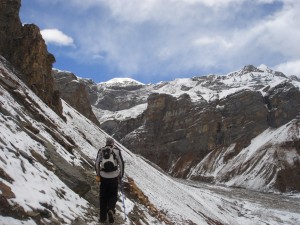
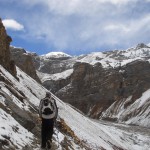
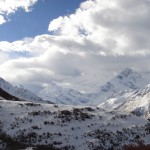
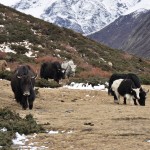

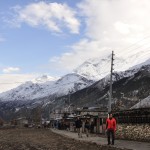

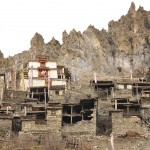
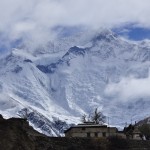
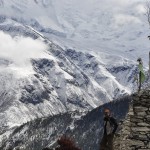
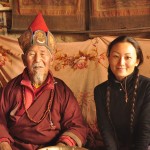
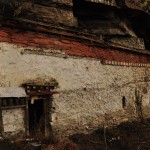
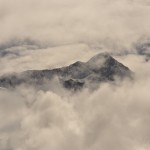


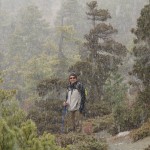
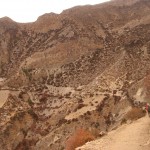
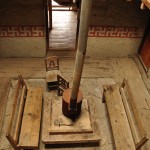

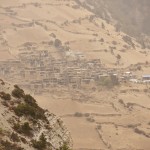
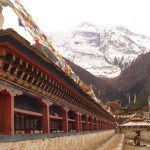
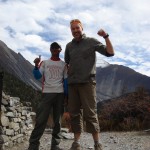
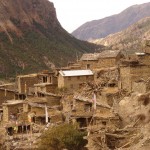
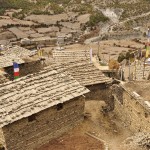
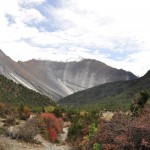




























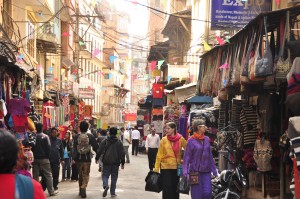
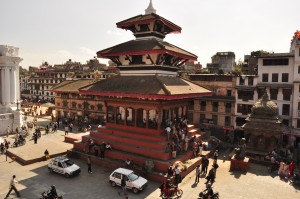
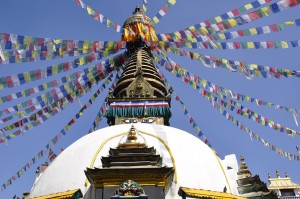
![Touring Laos After the excitement and surprise of Myanmar, Laos turned out to be a totally different adventure again. From Bangkok, we caught the overnight sleeper train […]](http://meltingplots.com/wp-content/uploads/2009/10/Hmong_Chillis.jpg)
